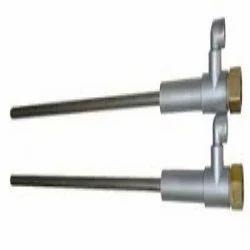Tuyere Design: The Key to Efficient Blacksmithing
Blacksmithing is an art that has been around for centuries, and it involves the heating of metal until it becomes pliable enough to be shaped into a desired form. The process requires a lot of heat, which is typically generated by a forge. However, for the forge to work efficiently, there needs to be proper air circulation, and that’s where tuyeres come in.
A tuyere is basically a pipe or nozzle through which air is blown into the forge. It plays a crucial role in determining the efficiency of the forge and can significantly impact your blacksmithing experience.
In this article, we will take a closer look at tuyere design and how it affects forging performance.
Design Considerations
When designing or choosing tuyeres, several factors must be considered. These include:
1) Size – Tuyeres come in different sizes depending on the size of your forge. A small-sized tuyere may not provide sufficient airflow for larger forges while an oversized one may cause too much turbulence leading to uneven heating.
2) Material – Tuyeres are often made from durable materials such as cast iron or steel with high melting points to withstand high temperatures.
3) Shape – There are two primary shapes when it comes to tuyeres- round or rectangular cross-sections. Rectangular designs offer more surface area hence increased airflow but require higher pressure than their circular counterparts.
4) Angle – The angle at which you position your tuyere determines how well air circulates within your forge. Typically angled between 20-30 degrees towards the center of the fire pot for optimal results.
5) Airflow rate – How much air should be drawn through each nozzle? This depends on various factors including fuel type used (coal vs propane), material being forged (iron vs steel), and desired temperature range among others.
6) Placement – Tuyeres should be placed in a way that allows the air to circulate evenly throughout the forge. Too many tuyeres can create dead spots where heat does not reach, while too few may lead to uneven heating.
Efficient Airflow
Airflow is vital in maintaining proper temperature levels within your forge. This means that you must ensure sufficient airflow through the tuyere for optimal performance.
One of the ways to achieve this is by controlling the pressure of air flow. A pressure gauge and blower valve can be used to regulate airflow and maintain consistent temperatures across all parts of your forge.
Another method involves choosing a shape that maximizes surface area for improved airflow. Irregular shapes can cause turbulence which affects how well heat is distributed within your forge leading to uneven heating.
It’s also essential to consider how far away from the fire pot each tuyere should be positioned so as not to lose too much heat or cause unnecessary turbulence within your system.
Material Considerations
The material used in making tuyeres plays a crucial role in determining their durability and effectiveness over time. Cast iron, steel alloys, bronze, and brass are popular materials choices due to their ability to withstand high temperatures without melting or warping under pressure.
Cast iron is an excellent choice because it holds up well against extreme temperatures while being relatively cheap compared with other metals such as brass or bronze. However, it can be brittle when exposed continuously at elevated temperatures leading it prone cracking or breaking if mishandled during installation or maintenance procedures.
Steel alloys like 4140 chromoly offer superior strength and resistance against deformation/degradation at high-temperature environments like those found inside blacksmithing forges yet still has enough malleability (ductility) for easy shaping/machining into desired forms/shapes needed during fabrication processes including drilling holes etcetera making them ideal options worth considering when designing custom-made nozzles/tubes suited specifically towards your unique application needs.
Bronze and brass can be used as well, but they are more expensive than cast iron or steel alloys. However, they offer better resistance to corrosion and have excellent thermal transfer properties that help dissipate heat more evenly throughout the forge.
Conclusion
Tuyere design is an essential factor when it comes to efficient blacksmithing. Proper airflow is necessary for maintaining consistent temperatures within the forge for optimal forging results. When designing or choosing tuyeres, several factors must be considered including size, material, shape, angle of placement as well as airflow rate among others.
It’s also important to ensure that you’re using high-quality materials such as cast iron or steel alloys to withstand extreme temperatures without melting or warping under pressure. With these considerations in mind, you’ll be able to create a tuyere system that maximizes efficiency while minimizing waste and energy consumption.
